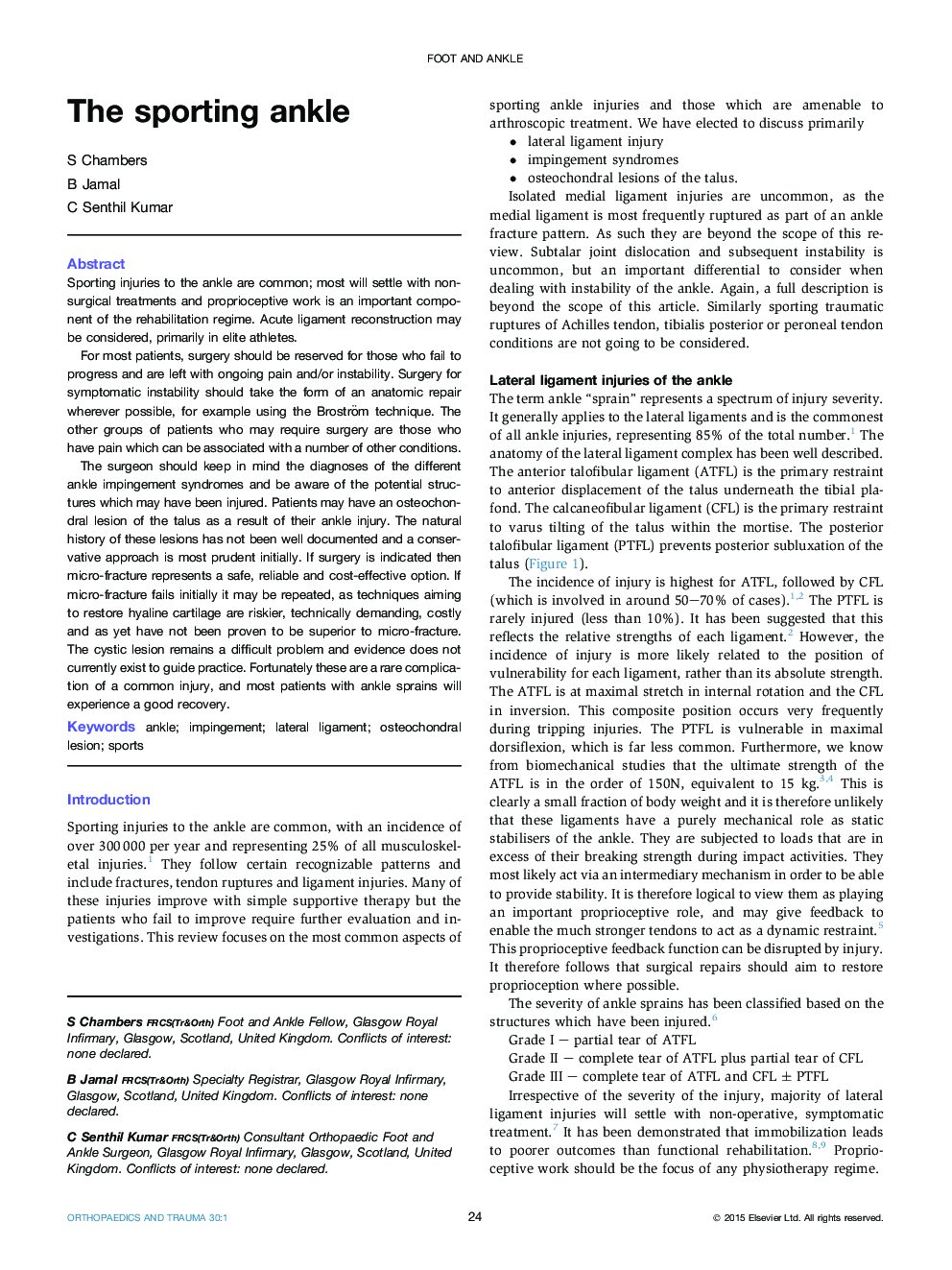| Article ID | Journal | Published Year | Pages | File Type |
|---|---|---|---|---|
| 4080093 | Orthopaedics and Trauma | 2016 | 6 Pages |
Sporting injuries to the ankle are common; most will settle with non-surgical treatments and proprioceptive work is an important component of the rehabilitation regime. Acute ligament reconstruction may be considered, primarily in elite athletes.For most patients, surgery should be reserved for those who fail to progress and are left with ongoing pain and/or instability. Surgery for symptomatic instability should take the form of an anatomic repair wherever possible, for example using the Broström technique. The other groups of patients who may require surgery are those who have pain which can be associated with a number of other conditions.The surgeon should keep in mind the diagnoses of the different ankle impingement syndromes and be aware of the potential structures which may have been injured. Patients may have an osteochondral lesion of the talus as a result of their ankle injury. The natural history of these lesions has not been well documented and a conservative approach is most prudent initially. If surgery is indicated then micro-fracture represents a safe, reliable and cost-effective option. If micro-fracture fails initially it may be repeated, as techniques aiming to restore hyaline cartilage are riskier, technically demanding, costly and as yet have not been proven to be superior to micro-fracture. The cystic lesion remains a difficult problem and evidence does not currently exist to guide practice. Fortunately these are a rare complication of a common injury, and most patients with ankle sprains will experience a good recovery.
